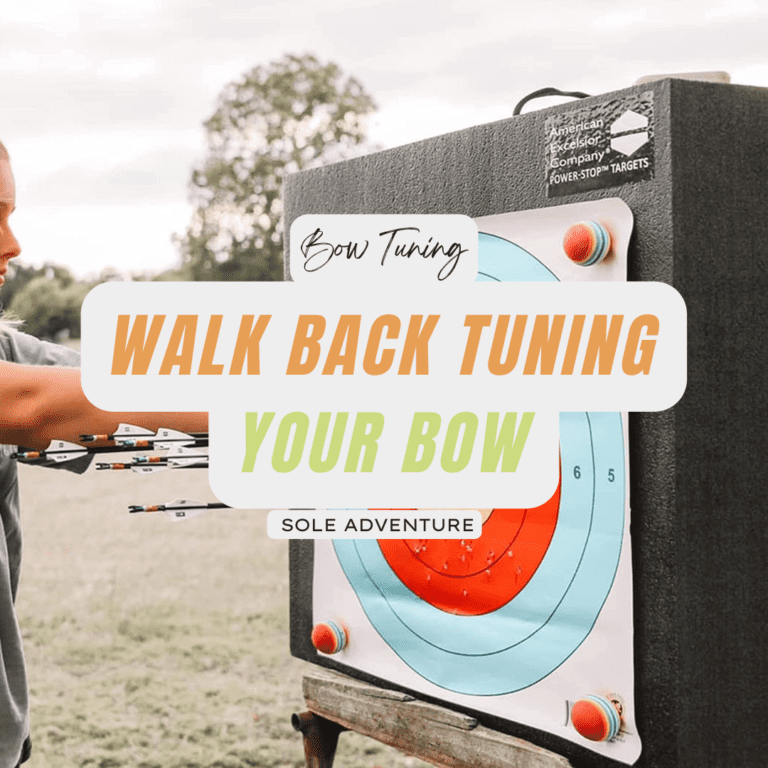Welcome to the 3rd step of the shot sequence.
In archery, everything culminates in the moment when you release the arrow. The way you draw and release the bowstring is crucial to the success or failure of your shot. Having invested time in perfecting your stance, selecting the right bow, and learning proper arrow nocking, it's essential to ensure that drawing the string correctly doesn't hinder your progress.
There are several methods to draw the string accurately, some of which may come naturally, while others might require practice and technique. This article explores various ways to draw the string for an impeccable shot and discusses archery releases that can aid in a smoother draw and release.
Contents
Three Methods for Drawing the Bowstring in Archery
Mastering your bow draw is vital for achieving a precise arrow trajectory and increasing your chances of success. There are multiple ways to draw the string, allowing you to find the method that best suits you.
Here are three popular techniques for drawing the bowstring in archery for an excellent shot:
Mediterranean Draw
The Mediterranean draw is a prevalent technique in which the archer holds the bowstring with three fingers: the ring, middle, and index fingers. By forming a hook with the first joints of these fingers, the archer can grip the string effectively. The thumb and pinky finger should be relaxed and facing downward.
After nocking the arrow, place the index finger above the arrow and the middle and ring fingers below it. Draw the string back using this hooked grip to aim. Beginners should start with the first joints to hook the string, adjusting their grip as needed over time.
Pinch Draw
The Pinch draw is another popular method that involves pinching the arrow's end with the thumb and index finger. This technique allows for a clean release, as the arrow will automatically fly once the draw is long enough to eliminate friction holding it to the string. Unlike other methods, the Pinch draw does not grip the string itself.
Thumb Draw
The Thumb draw is a method predominantly used in Asian cultures, where the archer grips the string with only their thumb. The middle and index fingers reinforce the grip by closing over the thumb. This method is ideal for shorter bows prone to string pinch and offers a longer draw as the string is pulled further back into the hand compared to the Mediterranean draw.
For right-handed archers using the Thumb draw, position the arrow on the right side of the bow, and for left-handed archers, position it on the left side.
Using Equipment to Safeguard Your Fingers in Archery
Many archers, including Olympians, employ protective equipment for their fingers while shooting, as direct contact with the bowstring can be painful and cause discomfort. Here are the most common tools people use to shield their fingers during archery:
Finger Savers
Small, flexible rubber devices that are placed on the bowstring at the nocking point. They provide a cushion for your fingers as you wrap them around the savers and draw the bowstring. Finger savers are commonly used by beginners and can be found on rented bows at archery ranges. However, as archers advance, they often transition to using proper nock locators and switch to gloves or finger tabs for recurve bows or release aids for compound bows.
Gloves or Finger Tabs
These protective measures are typically used with recurve bows. Gloves have three fingers and are made of leather, while finger tabs resemble a small leather piece that fits on the shooting fingers. The choice between gloves and finger tabs is a matter of personal preference, with Olympic archers generally favoring finger tabs.
Using Archery Releases for Drawing and Releasing
Many compound bow archers now use archery release devices, which assist in achieving a smooth draw and clean release for stable arrow flight. These devices can help eliminate potential issues that may affect your arrow's trajectory when drawing the bowstring.
Benefits of using an archery release device include:
- Replacing fingers in drawing a bowstring, particularly beneficial when using a compound bow instead of a longbow or traditional recurve bow.
- Preventing string torque, which can change the arrow's flight due to bending the string incorrectly when using fingers to draw. An archery release offers a more stable grip on the string and ensures a clean release.
- Improving accuracy and shooting consistency, as archery releases make it easier to establish an anchor point.
- Boosting archery confidence, which can help you learn new techniques more easily due to a positive approach.
With various types of archery releases available, choose the one that best supports your string pulling technique.
Optimal Finger Grip in Archery: Placement, Depth, and Consistency
Understanding how deep your grip should be on the bowstring is crucial for maintaining stability and avoiding accidental discharge. Ideally, the string should be placed on the intermediate phalanges, which is the second last bone in your fingers. Placing the string on your fingertips can strain your muscles and compromise security. Keep your fingers in an open hook position, ensuring that the string can't slip away.
Consistency in finger placement is essential to maximize the efficiency of your shot. Place your fingers as close to the arrow as possible without touching it to ensure the strength used to pull the bow is transferred efficiently. This consistent finger placement will help maintain a stable draw length and arrow trajectory. Using a tab can help keep your hand positioning consistent, while finger glove users should be extra cautious.
The positions of your thumb and pinky, while not directly involved in drawing the bow, still play a role in shooting consistency. Folding your pinky towards your palm increases tension on your ring finger, so maintain a consistent pinky position to ensure accuracy. Some competition recurve archers use a tab with a pinky hook to maintain consistent tension between shots.
When anchoring below your chin, use a tab with a thumb rest or anchoring shelf to consistently place your thumb. This will help avoid inaccuracies in your shots. Finger dividers on modern tabs help ensure your fingers are spread enough to accommodate the arrow, preventing any unintentional contact. Be extra cautious when using finger gloves, as it is easier to pinch the arrow without noticing. This consistency in grip and finger placement will ultimately contribute to better accuracy and overall shooting performance.




